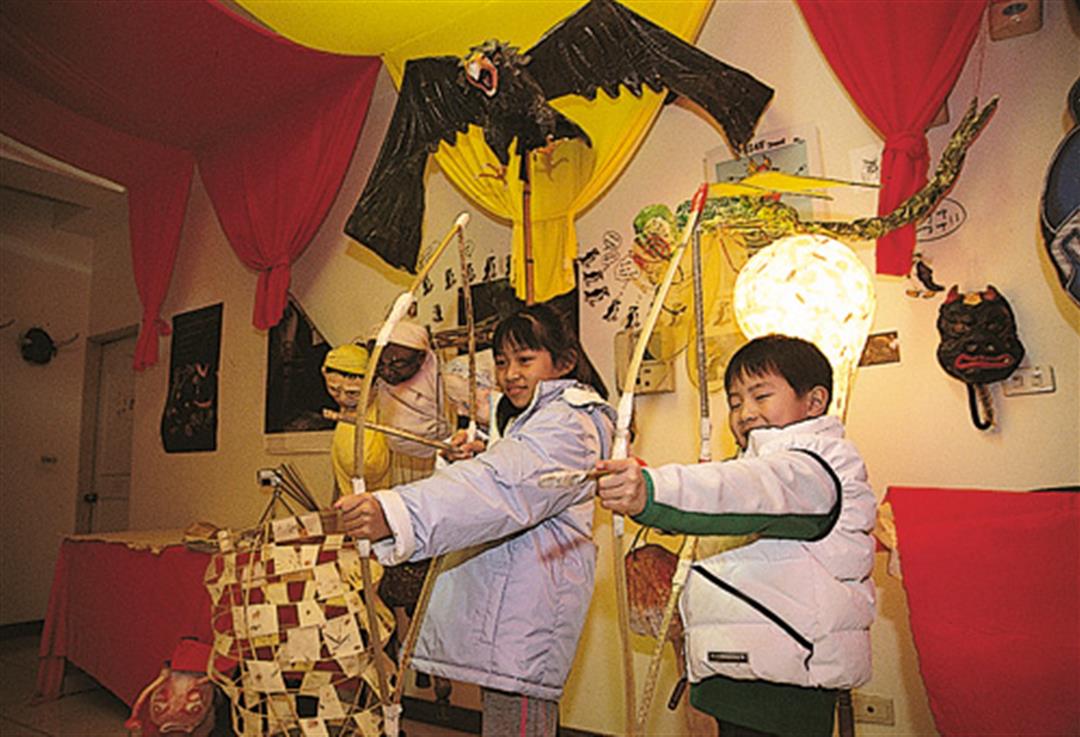Foes today, friends tomorrow
Tsai's first go at the Dream Carnival was in 2002. Recalling the indifference and suspicion he faced in the early days, Tsai exclaims: "Just imagine, trying to put on an arts parade in a conservative place like Hsichih, and needing everyone to pitch in, no less. Good grief!" Relying heavily on friends and relatives, he ran around imploring people to come out with him, and managed to come up with a couple hundred people willing to take to the streets. But the parade lacked a central theme, and disorganized parade teams couldn't effectively express the creative ideas people had in mind. The atmosphere was subdued, and even Tsai himself was dismayed.
Peers in the construction industry laughed at Tsai's efforts to start up an arts carnival, and said he was just throwing away his money. One academic criticized Tsai, saying the whole thing was just a gimmick to drive up housing prices. And some residents, far from taking part, actually filed a complaint with the Environmental Protection Bureau, saying that the event was too noisy.
"We've had to deal with suspicion every step of the way. Heck, even a saintly Buddhist monk like Master Sheng Yen has people who suspect his motives, so why should I worry about it? I'm confident that those with suspicions will become our best friends once they've observed us over an extended period."
When the second year rolled around, the foundation invited five veteran artists over from Fremont (including a public artist, prop maker, and fire dancer) and an arts agent to stay in the community for three weeks. The guests discussed parade themes with local residents and directed the production of parade floats, helping people overcome their lack of confidence in their artistic abilities. As a result, the parade teams were big crowd pleasers the second year.
The Dream Carnival has grown steadily more polished over the past five years, and its influence has begun to spread. Teams hoping to participate now have to submit a theme proposal a half year in advance of the parade, then come to the community at least twice to participate in and observe artistic events. One month before the event, they are allowed to come to Hsichih and use temporary workshops to prepare parade props and rehearse with the help of 32 foreign artists from ten different countries. All resources are available free of charge, and the Foundation, in a bid to encourage participation by the public, also gives each team a NT$5,000 subsidy to help defray the cost of materials.
The foreign artists are specialists in painting, dance, theater, and music, as well as juggling and other stunts. During the month-long preparations, residents use their spare time after school and jobs to work on parade ideas and experiment with art. In a very natural way, they end up living within art.
The influence of Dream Community now extends beyond the community itself. Tsai has arranged for American artist-in-residence Jimmy Baila to teach drumming to the Aboriginal children at Camphor Tree Elementary School. The samba drummers of Camphor Tree Elementary have now attained a degree of fame, and are often invited to put on performances. They are even scheduled to perform overseas this year.
The foundation also arranged for Jimmy to go on a three-month tour among Aboriginal villages in Pingtung County. And lantern maker Tomas of Mexico took his skills to the outlying island of Matsu, where he contributed a note of foreign inspiration to the Lantern Festival.

Some 60 artists come every year to take up residence at Dream Community. These two children are using castoff bamboo at a basket weaver's workshop to make bows and arrows.